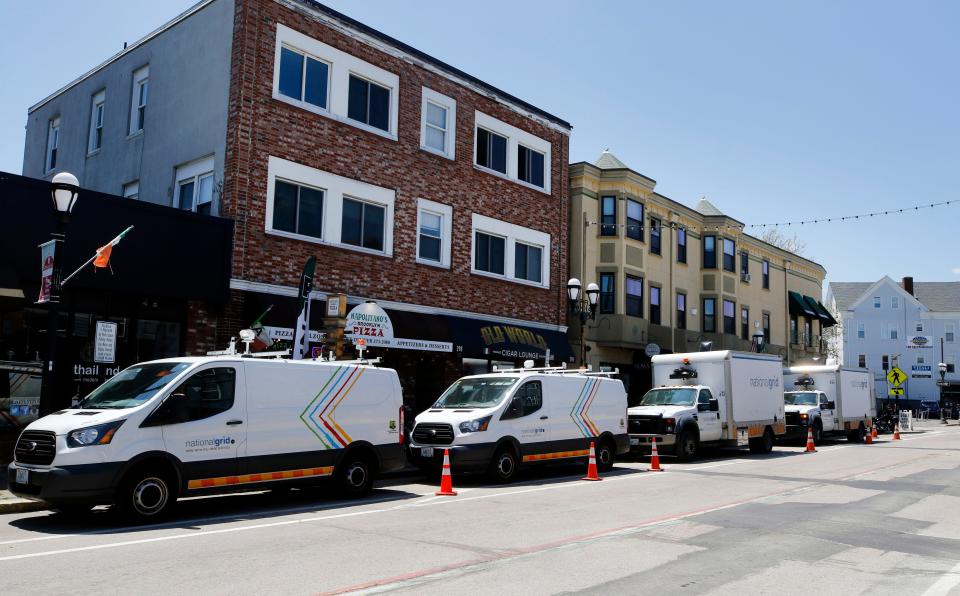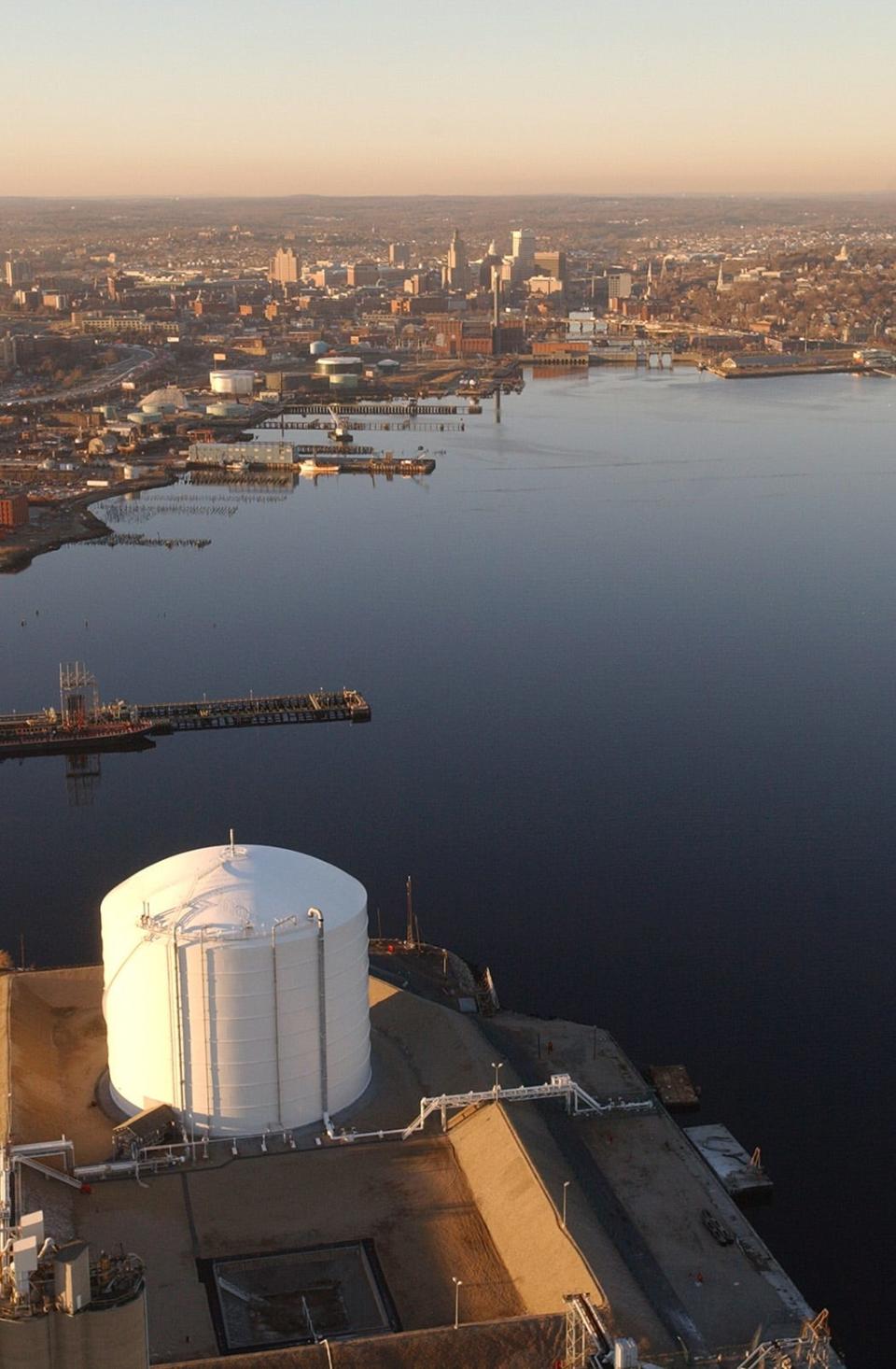With the future of natural gas in RI on the line, what to do with the aging infrastructure?
WARWICK — In past years, state utilities regulators have approved, as a matter of course, the annual replacement of as much as 70 miles of aging natural gas mains made of outdated materials that are prone to leaking.
But times have changed. With the adoption two years ago of a sweeping state law to slash greenhouse gas emissions, the Public Utilities Commission is rethinking every aspect of the state’s energy regime, including how Rhode Islanders heat their homes and businesses.
And because one possibility on the table is the eventual abandonment of the underground network of pipes that delivers natural gas around the state, the PUC is now questioning how much is worth sinking into Rhode Island Energy’s replacement program and what the impacts of continued spending are for the utility’s 273,000 gas customers.
More: 'Pivot away from fossil fuels': Why advocates are urging RI cities, nonprofits to divest
Act on Climate has utilities thinking about the future of natural gas use
It may seem counterintuitive. After all, installing new pipes made of sturdy plastic cuts down on leaks of methane, a greenhouse gas even more potent than carbon dioxide. But the utilities commission is looking decades down the road at ways to green the heating sector, which accounts for nearly a third of all emissions in the state.
A recent ruling by the commission to reduce the amount of pipeline to be replaced in the next fiscal year may have been one of the first steps down that road.
Even before passage of the Act on Climate, the 2021 law that mandates Rhode Island reach net-zero emissions by 2050, utilities regulators had given consideration to reducing the state’s dependence on natural gas for heating, specifically with regard to Aquidneck Island, the site of a winter gas outage four years ago.

Advocates with the Acadia Center and the Conservation Law Foundation called for an investment in electric heat pumps to shore up the island’s heating system rather than increasing dependence on gas, which is delivered by a single pipeline across the Sakonnet River. The state Energy Facility Siting Board turned down that petition a year and a half ago, but wouldn’t rule out a moratorium on new gas connections on the island in the future.
Discussions have only taken on more weight with the opening of a docket before the PUC on the future, in light of the Act on Climate’s requirements, of the entire natural gas system in Rhode Island. At a forum in February, commission chairman Ron Gerwatowski, who also chairs the siting board, made clear that not only is a ban on natural gas hookups in new buildings on the table, but so too is the discontinuation of the gas system as a whole.
While the deliberations, as part of that docket, are aimed at the long term, the commission must still deal with the shorter-term needs of the gas system, namely the pipe-replacement program.
More: A ban on gas heating or stoves in new construction in RI may be coming. Why it's an option.
Rhode Island's natural gas mains among the oldest, most leak prone in the nation
Rhode Island Energy, the state’s dominant electric and natural gas utility, maintains 3,227 miles of gas mains, about a third of which are made of cast iron or unlined steel and prone to corrosion and cracking.
The company has been replacing the pipes, some of which date back to the 1800s, since 2011 with plastic, which is less likely to leak. Before the pipe replacement program began, federal regulators found that Rhode Island had the highest-percentage of leak-prone pipes in the nation.
The program has ramped up over time, from 25 miles annually in the early years to more than twice that in recent years. It’s among the most aggressive pipeline replacement efforts in the nation and leaks have dropped.
Rhode Island Energy maintains that the continued work, which isn’t expected to wrap up until 2035, is necessary for safety and reliability.
Regulators didn’t question the need for the repairs in the past – even encouraging expansions of the program to shorten the time to completion — and they aren’t necessarily doing so now.
They are, however, subjecting the utility’s plans to more scrutiny in light of the state’s evolving climate policies.

Pipe replacement comes with huge costs that could outlive its use
That’s partly because any pipes laid today would have a lifespan of 50 to 100 years, locking in gas infrastructure well into the future.
It’s also because the money at stake is substantial and would have to be paid off over time. In the next fiscal year, Rhode Island Energy proposed replacing 69.5 miles of pipe at a cost of more than $100 million. Over the next four years, the company is planning total investments in the gas system in the state of more than $1 billion.
The concerns aren’t just coming from utilities regulators and environmental advocates. The office of Attorney General Peter F. Neronha also demanded in a filing with the commission that Rhode Island Energy reconsider its investments in the gas system “given the risk of ratepayers assuming the cost of what will become useless infrastructure.”
“As the State moves to meet the requirements of the Act on Climate, there are risks that utility spending on infrastructure investments that may need to be abandoned in the mid-term (or possibly even near term) could create stranded costs and regulatory assets that ratepayers will be stuck paying for well into the future,” the Attorney General’s office wrote.
The office argued that the commission “has a duty” to stop an expansion of the pipe replacement program and urged it to “slow or halt this investment.”
Regulators hit pause button on a portion of pipe replacement
Leading up to the utilities commission’s meeting last Wednesday, Rhode Island Energy worked out a settlement with the Division of Public Utilities and Carriers, the sister agency to the PUC. Under the agreement, the utility would cut the number of miles of pipe to be replaced from 69.5 to 65, saving gas customers $7.3 million.
The commission cut that number down to 60 miles for a further $7.3 million in savings. The pipes removed from the coming year’s replacement program are considered at low risk of leaking. And, for now, the commission’s ruling only delays by a year that they’ll get replaced.
But that will buy time while bigger policy decisions in the future of gas docket are worked out.
“In the case where we end up abandoning the system, I think it’s our job right now to figure out how to minimize the risk of having stranded assets,” commission member Abigail Anthony said. “One of the places where this is the most salient today is our continued investment in replacing leak-prone pipe.”
The decision could be a precursor of more changes to come in how regulators treat the gas system.
“I think we’re going to need to look at whether the leak-prone pipe target of 2035 makes sense and whether we should continue business as usual,” Gerwatowski said.
This article originally appeared on The Providence Journal: RI Energy, PUC scale back natural gas main replacement amid climate goals

